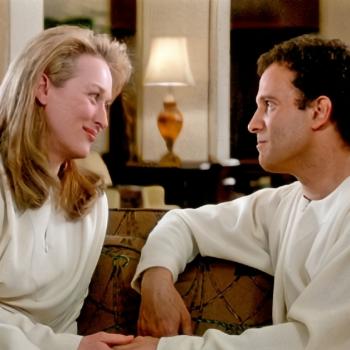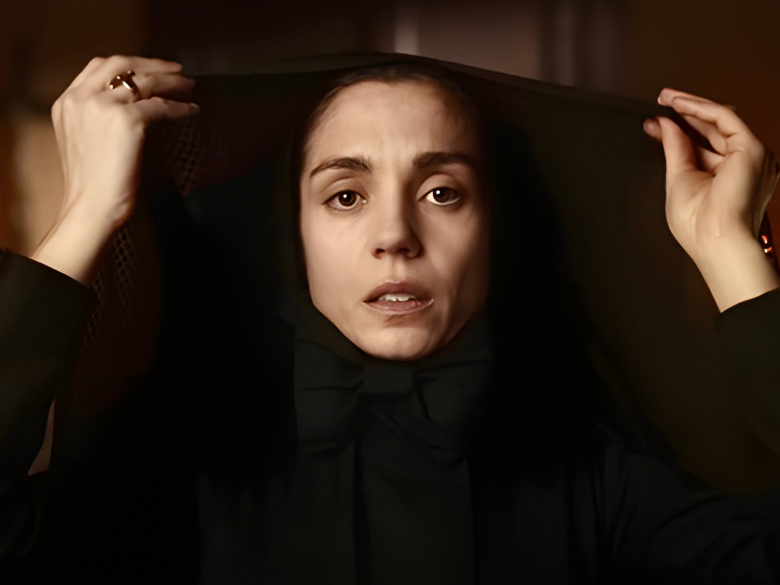
Churning beneath the surface of this true story about strong females succeeding against limitations imposed by men, Cabrini is a theological treatise for immigrant equality and affirmation within the body of Christ. It’s a message all of us need to hear, and it’s very timely.
Don’t get me wrong: Cabrini is certainly a story of women refusing to be constrained by complementarian oppression within and without the church. From the very beginning of the film, a lot of men are telling Mother Cabrini (Christiana Dell’Anna) “No,” regardless of what she asks for.
This begins in Italy when her requests to establish a new order of missionaries who found orphanages are systematically rejected by the Vatican. Repeatedly, Cabrini is ordered by church leaders to stay where she belongs, even by Pope Leo XIII (Giancarlo Giannini) himself. She finally gets fed up and erupts, “Is it because I’m a woman that I must limit my scope?”
Cabrini was fighting the literal Patriarchy.
Here is the film trailer:
Old Problems in a New World
Now, before some of you critical readers close your minds and dismiss Cabrini as an ostensibly “Catholic” film venerating a saint, consider this: even for those of us outside Roman Catholicism, themes of unabashed racism and a glass ceiling remain painfully accessible realities in today’s world.
After having tea with the bold and outspoken Mother Cabrini, Pope Leo is inspired to reverse course and commissions her to begin a ministry to orphans—but he changes her desired assignment from inland China to New York City.
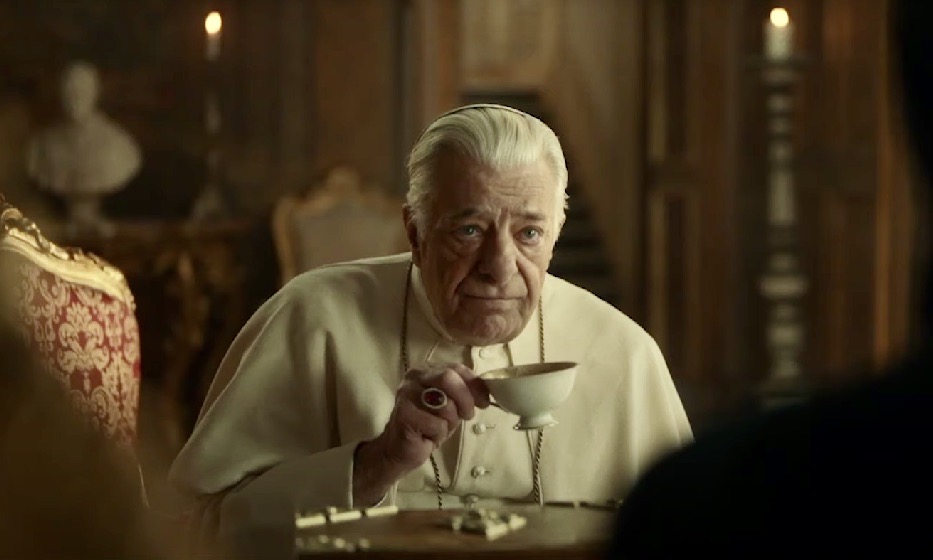
When Cabrini and her small order of like-minded Sisters arrive in Five Points, Manhattan (previously depicted in Martin Scorsese’s Gangs of New York), they are overwhelmed by extremes of poverty, disease, crime, and homelessness. Vittoria (Romana Maggiora Vergano), a young Italian prostitute with the proverbial heart of gold, shelters them in a brothel their first night, and becomes an ally who is instrumental to plugging Cabrini’s mission into the community. Also helpful in this regard are young orphans Paolo (Federico Ielapi) and Enzo (Liam Campora), who Cabrini frees from living amidst the filth of improvised immigrant encampments hidden deep within the serpentine bowels of the city’s underground sewers.
Less than helpful is Cabrini’s immediate ministry supervisor, Archbishop Corrigan (David Morse). First, he attempts to nullify her papal orders and send her back to Italy. When that fails to succeed, Corrigan commands her to never solicit donations from whites and only seek help from other Italians. Automatically, this hobbles her best fundraising opportunities because there were wealthy Manhattan Anglos who could have been sympathetic to her efforts, or at least desired to publicize a charitable donation. On the other hand, Italian immigrants living in New York City in the latter 1800s made up the lowest economic class, and rather than having financial resources to assist Cabrini, they would have almost universally been those most in need of her help.
In case you were wondering, it is historically accurate for the film to depict urban Italians as poverty-stricken migrants who are marginalized, rejected by the white ruling-class society, and extremely vulnerable.
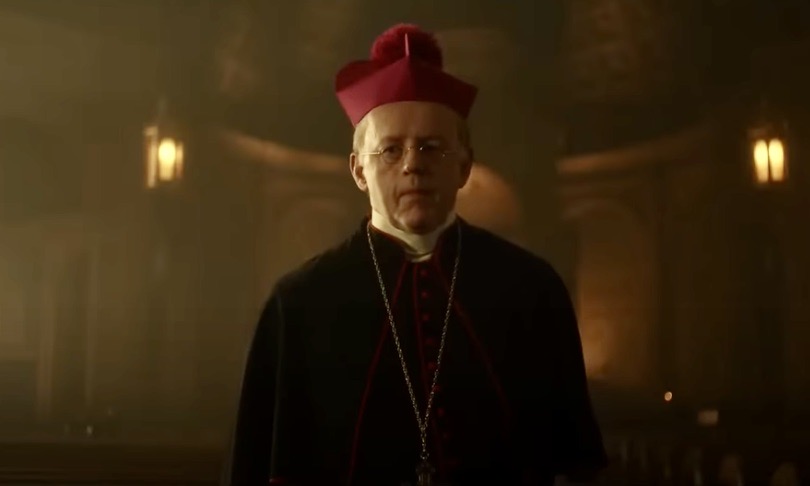
Behind the scenes, Archbishop Corrigan is pressured by a fictitious/composite villainous New York City Mayor Gould (John Lithgow) to undermine and sabotage Cabrini’s efforts because of the Mayor’s unwavering racist bigotry and hatred of all brown-skinned people in general, and immigrants in particular.
Meanwhile, while helping kids escape the underground sewers, Cabrini collapses in respiratory distress, and is promptly diagnosed with Tuberculosis and given only two years to live. This of course does not dash her hopes to build a worldwide network of orphanages, but instead gives her grim resolve to succeed despite these disadvantages.
Only By Love
There are several episodic scenarios woven throughout the narrative of the film that are quite good.
One of my favorites is when a certain pimp named Geno (Giacomo Rocchini) comes to Mother Cabrini’s mission in the middle of the day during school to reclaim Vittoria, the former prostitute, who he sees less as an employee and more as a piece of property. Cabrini ends up defiantly blocking the classroom door to keep Geno from taking Vittoria, and during the struggle, little Paolo attempts to intervene and Geno smacks him in the face. Paolo instantly brandishes a revolver and shoots Geno.
Certainly, this plays as sensationally on screen as it must appear in print, but there is a related scene later in the film that is even better. Vittoria realizes that she is broken, that her past has wounded her to the core, and she feels unworthy of grace. “There’s not enough water in the world to make me clean,” says Vittoria. Cabrini does not judge Vittoria for a moment, and loves her unconditionally. Cabrini even empowers Vittoria to serve as her second in command, an affirmation that too many churches today would unfortunately avoid. This Christlike attitude is described within the film quite succinctly by the composite character, New York Times reporter Theodore Calloway (Jeremy Bobb): “She believes wounds can be healed only by love.”
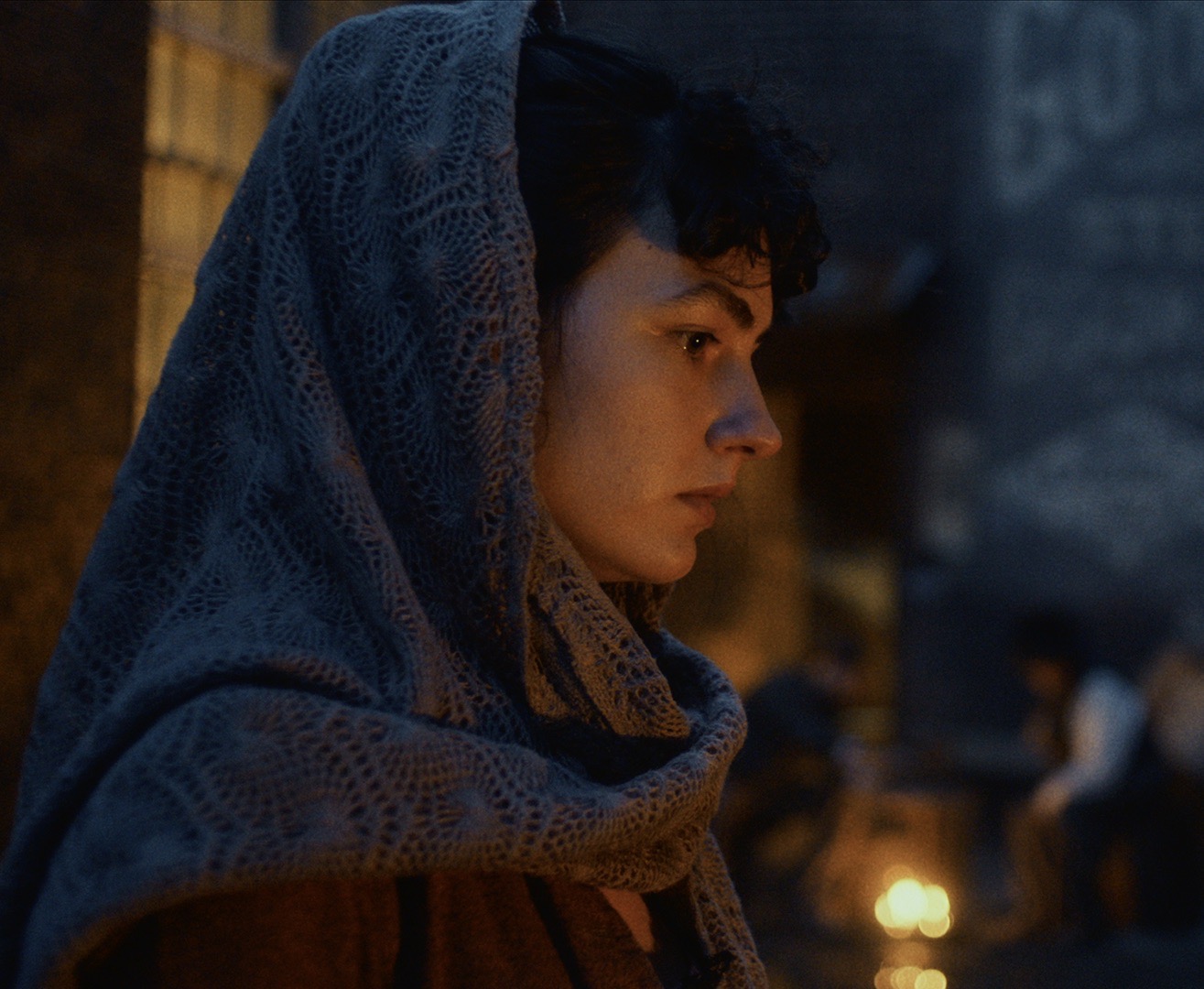
The press and the New York Times are portrayed so positively in Cabrini that I stayed to read the very last frame as the credits rolled to see if the filmmakers were granted some special funding or cooperation from the New York Times Company or anyone named Sulzberger (they weren’t, by the way).
Oddly enough for a Christian film, twice in the story Calloway’s journalistic capacity for communicating facts to the masses serves as a deus ex machina, providing daylight for Cabrini to carry out her mission. In the first of these, she persuades the reporter to tour the horror of Five Points, and we hear fragments of his subsequent article narrated over a montage of children living in homeless squalor. “Dear reader, do we not owe these children better than rats?” spoken over images of voiceless, brown-skinned immigrants quarantined in slums is particularly effective. Many of these scenes in the film were recreated from historic photographs of the conditions of life in Five Points, taken in 1889.

Art Meets Ideals
Like many effective movies, there are plot developments, obstacles to overcome, and a final confrontation between good and evil with results that are satisfying even if not fully less than we can anticipate. My hope is that by not spoiling the plot outcomes, I may persuade more than a few of you to go see the movie.
Here is a song written for the film, performed by Andrea Bocelli and Virginia Bocelli:
Cabrini is undeniably well-acted and well-made. The filmmakers elected to tint the color of the film sepia, an effect that although admittedly dated in-and-of itself does not detract from its intended visual impact. There is a degree of professionalism, artistry, and accuracy many Christian films have historically lacked. For example, the Statue of Liberty is appropriately copper-colored as it would have been in 1889, rather than the distinctive oxidized green patina we have seen all our lives in person and film. There are moments when the orchestral score, composed by Gene Back, gathers intensity, rippling like a strong, fast-moving current, and in one scene, subtle variations on Simple Gifts transformed before my ears into an elegant but engaging adagio.
A surprising percentage of the dialogue is historically accurate, sourced from diaries, journals, and news reports. Combined with the rest of the screenplay penned by Rod Barr, the script is nothing less than a manifesto demanding equality, not only for women, but people of color as well, with a focus on immigrants of all ages, including children.
In one scene when Mother Cabrini demands to speak with the mayor, an unfortunate man asks her, “Who the hell are you?” to which she replies, “I am a woman, an Italian, and I am done dealing with men as small as the size of a peanut.”
Infer what you will…
Or, consider Pope Leo’s spoken observation: “I can’t tell where your faith ends and your ambitions begin.” How I wish that was true of all Christ followers!
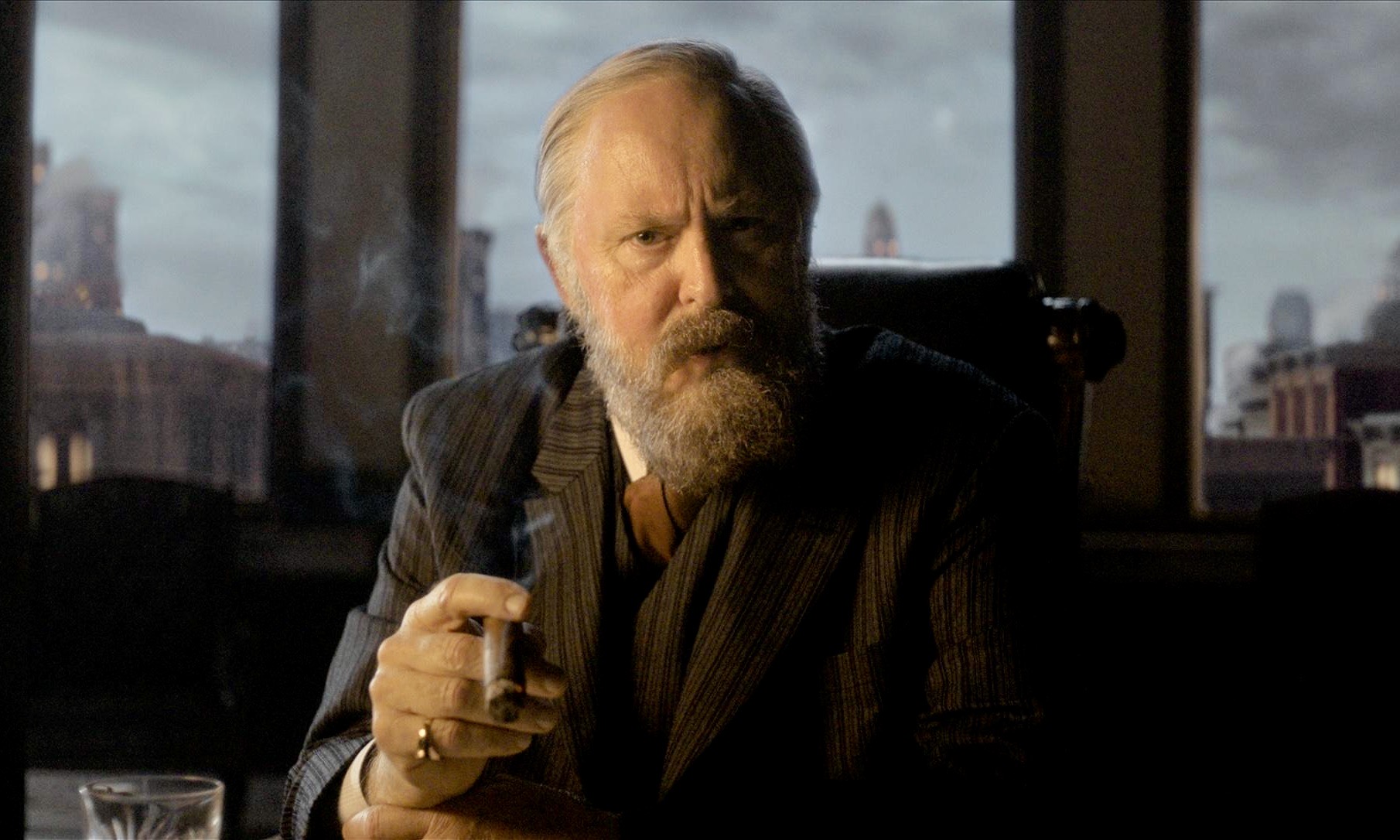
And despite the many scenes of men telling Cabrini, “You’ve wandered into rooms where you simply don’t belong,” she never gives up. Courage isn’t fearlessness, it is acting selflessly in the face of your greatest fears. This too is Christlikeness. One character spoke of Cabrini wearing her habit “like a suit of armor.”
Cabrini worked to do good against the orders of religious leaders who made excuses for not embracing change, even though their ways had already failed. She modeled discipleship, advising Vittoria to “not just carry on but lead, to demonstrate you can do all things through Christ who strengthens us.” Cabrini was willing to speak for the immigrant, asking politicians, “What did we do for the poor?” For those who need it?”
She believed “one gesture of love can cure everything.”
As the film points out at the end, Mother Cabrini’s gesture became a worldwide movement, an empire. Her order founded hospitals across the globe, all managed by women, saving millions of lives and sheltering those in needs regardless of age, gender, sexual orientation, economic status, or skin color. Cabrini’s network of 67 hospitals, orphanages, and schools connected by hope and bearing her name became the largest charitable empire in the world. She was the first American to become a saint.
Fittingly, she is the patron saint of immigrants.
The Hero We Need
For many of us, the world has been made accessible through film for better and mostly for worse by white-skinned square-jawed leading men who are chiseled, flawed, but above all strong.
Think of a perfectly backlit Michael Landon holding back tears, towering in masculinity and four-inch boot lifts over his blonde family of annoyingly wholesome toothpaste models as together, they encounter yet another unthinkable tragedy in late nineteenth-century America. We have consumed countless hours of media such as this for our entire lives, none of which are marginally realistic or Christlike in the least.
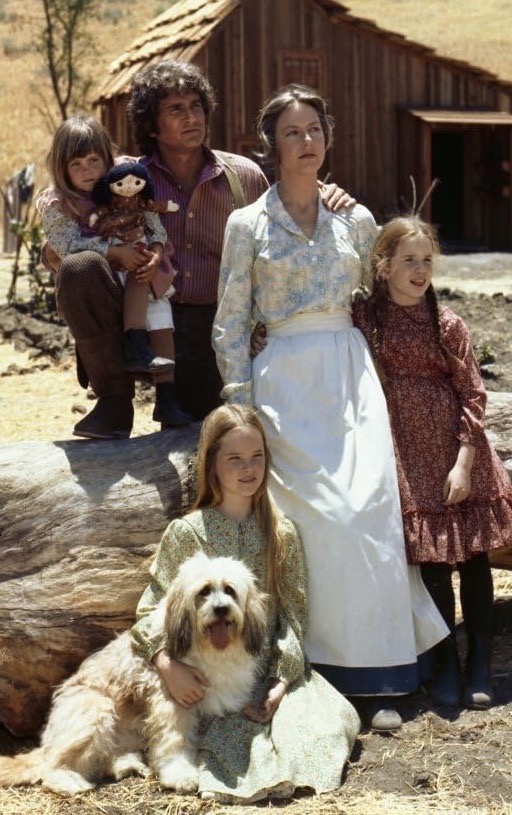
Between barn fires, wild animal attacks, greedy/ruthless men of industry, sudden infant deaths, the ravage of then uncurable diseases, Indian massacres, catastrophic failures of heavy machinery, or the spectacular insanity of special guest stars, we have grown accustomed to witnessing terrible things happen to characters we have grown to care about.
When such an event inevitably happens during the narrative of Cabrini, rather than see a strong man take control, Mother Cabrini sits down beside the young Paolo, who just learned that one of his friends has died. She shares no warm, comforting words, and doesn’t hold the boy in stoic wordlessness. Instead, she breaks down and weeps with him.
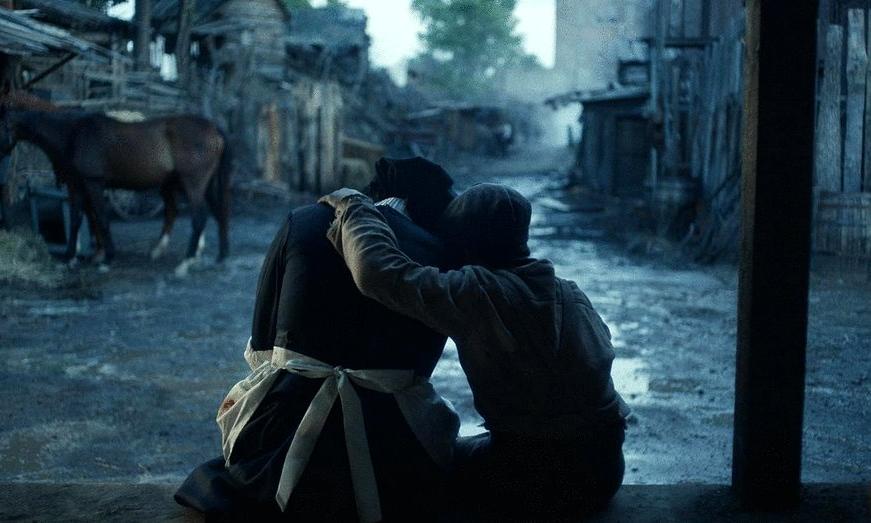
Such a recognition of loss and sadness is not only human, but Christlike, in the same way Jesus responded to Mary and Martha’s brother and his friend Lazarus’ death by weeping rather than mansplaining.
This kind of unexpected and welcome feminism is present all throughout Cabrini, both in its portrayal of strong women and the text of the script itself. For example, one character remarks, “You would have made an excellent man,” to Cabrini. “Oh no,” she replies. “Men can never do what we do.”
The Color of Love
For a while, I wondered who the target audience of this film is.
When I went to watch the movie, I observed many Catholics bringing their friends and family to see the movie, even children. And despite it’s PG-13 rating, the ideas are important enough that even younger kids could benefit from watching it. One of my friends went to go see it on International Women’s Day.
Is Cabrini a perfect film? No, but it’s very good, and its one you should see, along with your friends and neighbors. Like food that is nutritionally good for us, some of the best things we can consume are not what our incredibly subjective palettes desire.
Almost all “Christian” films target Evangelicals both in subject matter and politics, feeding red meat to red state mindsets to reap the financial rewards of churches buying movie tickets by the dozens. In Cabrini, there is even a throwaway line Mother Cabrini delivers to the Mayor of New York, foreshadowing a future Italian politician who will hold that particular elected office (Giuliani or de Blassio: you be the judge), but by that point in the film, I suspect most of the MAGA cheerleaders will have already left the theater.
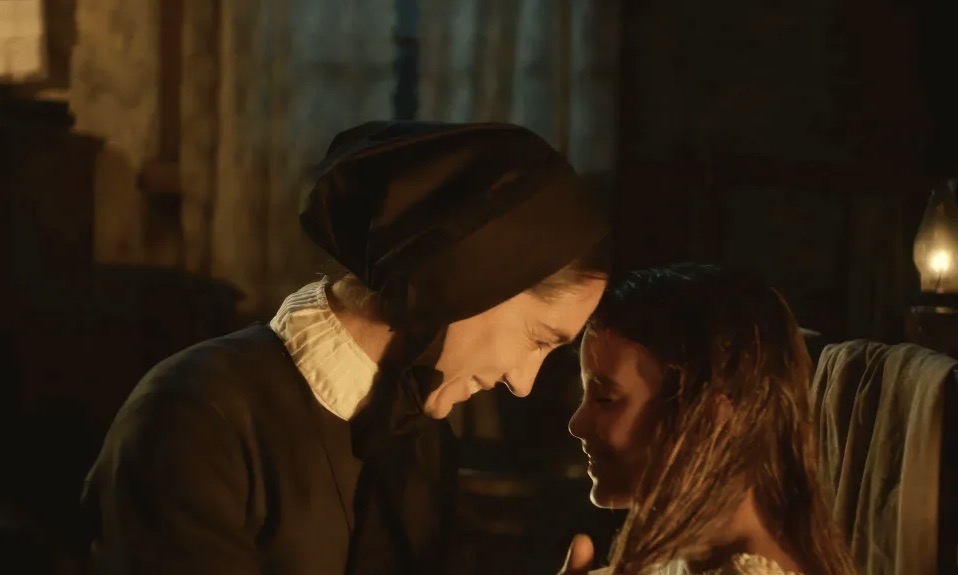
While some Christian filmmakers throw in a magical negro or token feisty Latino character to populate their cast, most people of color in “Christian” films are depicted as criminals being chased by arrow-straight law enforcement officers, or play other negative stereotypes like gang members, drug dealers, or prisoners, often as extras without spoken lines. In those kind of films, the usually white middle-class protagonists experience some great depressing crisis, which is invariably worsened by a highly symbolic lack of faith or demonstrable “sin,” only to later experience a cathartic spiritual breakthrough and find themselves happy and fulfilled. And this tired formula reels in Hobby Lobby Evangelicals who are otherwise occupied boycotting Target and joining the NRA by the boatload. To them, such entertainment is as essential as pumpkin spice, Chick-fil-A, and low-budget cis TV romance flicks starring Candace Cameron Burre.
It is the same contingent of people who overwhelmingly see brown-skinned people immigrating into their country as a crisis, and vote for a Machiavellian tyrant willing to grab female genitalia without consent, shoot peaceful protesters, and inspire brain-washed QAnon insurrectionists to storm the capital and overthrow the government regardless of loss of human life so he can continue policies that separate families and confine dark-skinned children to cages.
You and I are called to do much more than vote: loving others means we treat others, even brown immigrants, not just how we would love ourselves, but how we would love the Lord with all our heart, mind, soul, and strength. As Cabrini said in a film filled with cowardly males, “We are bold or we die. That is how I learned to live in America.”
So, is Cabrini targeting Evangelicals? I hope so.
★★★★☆








